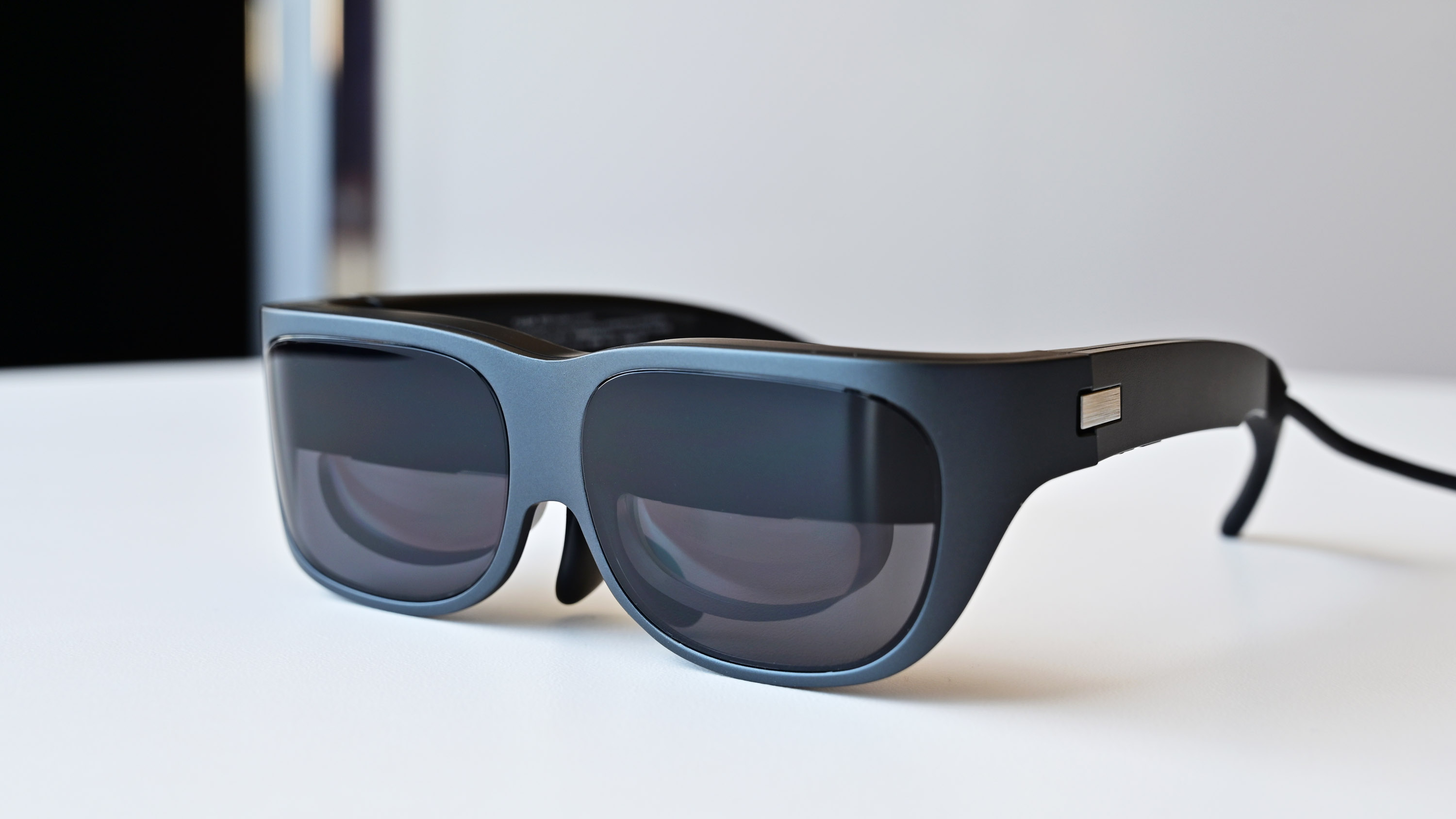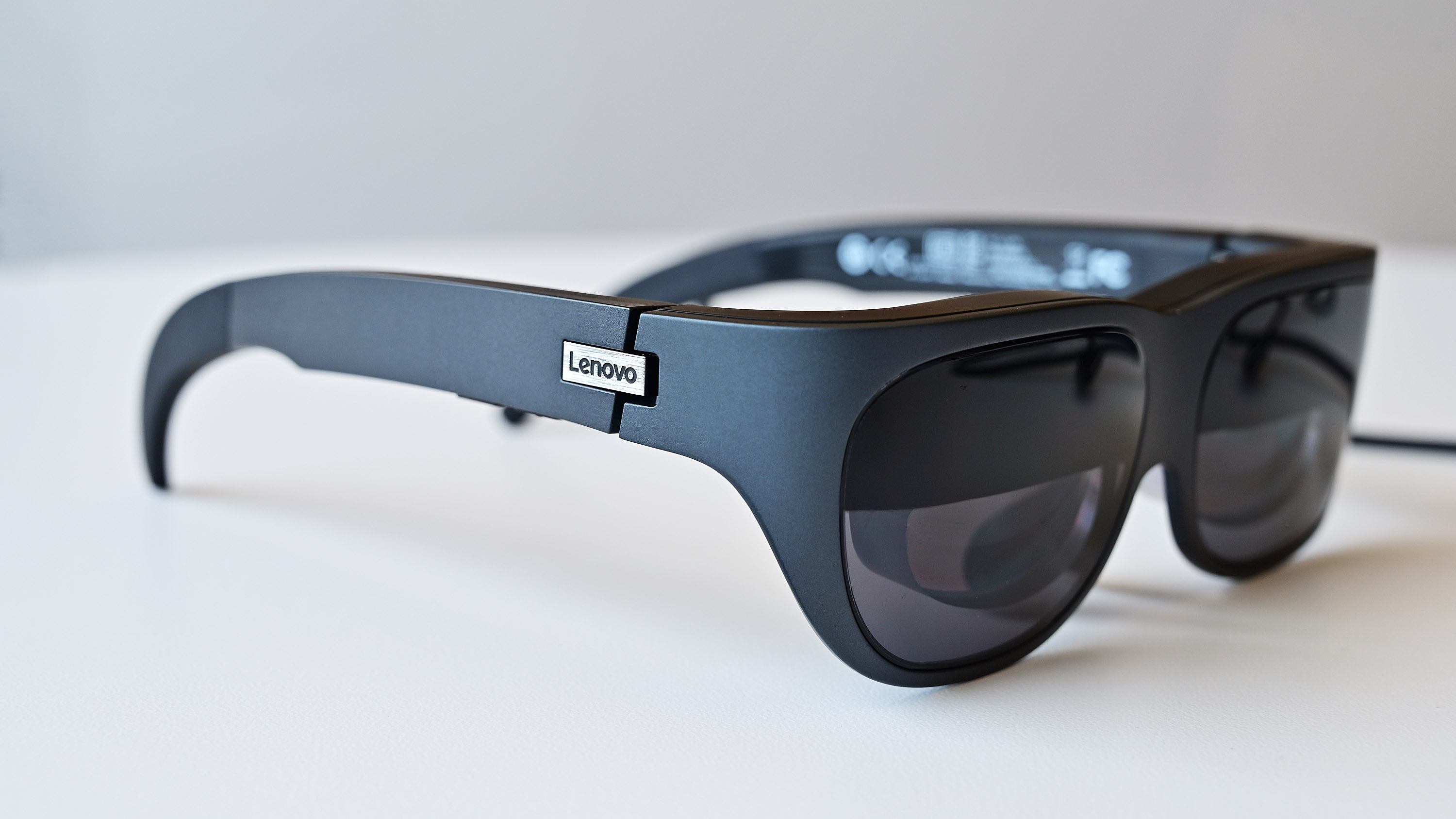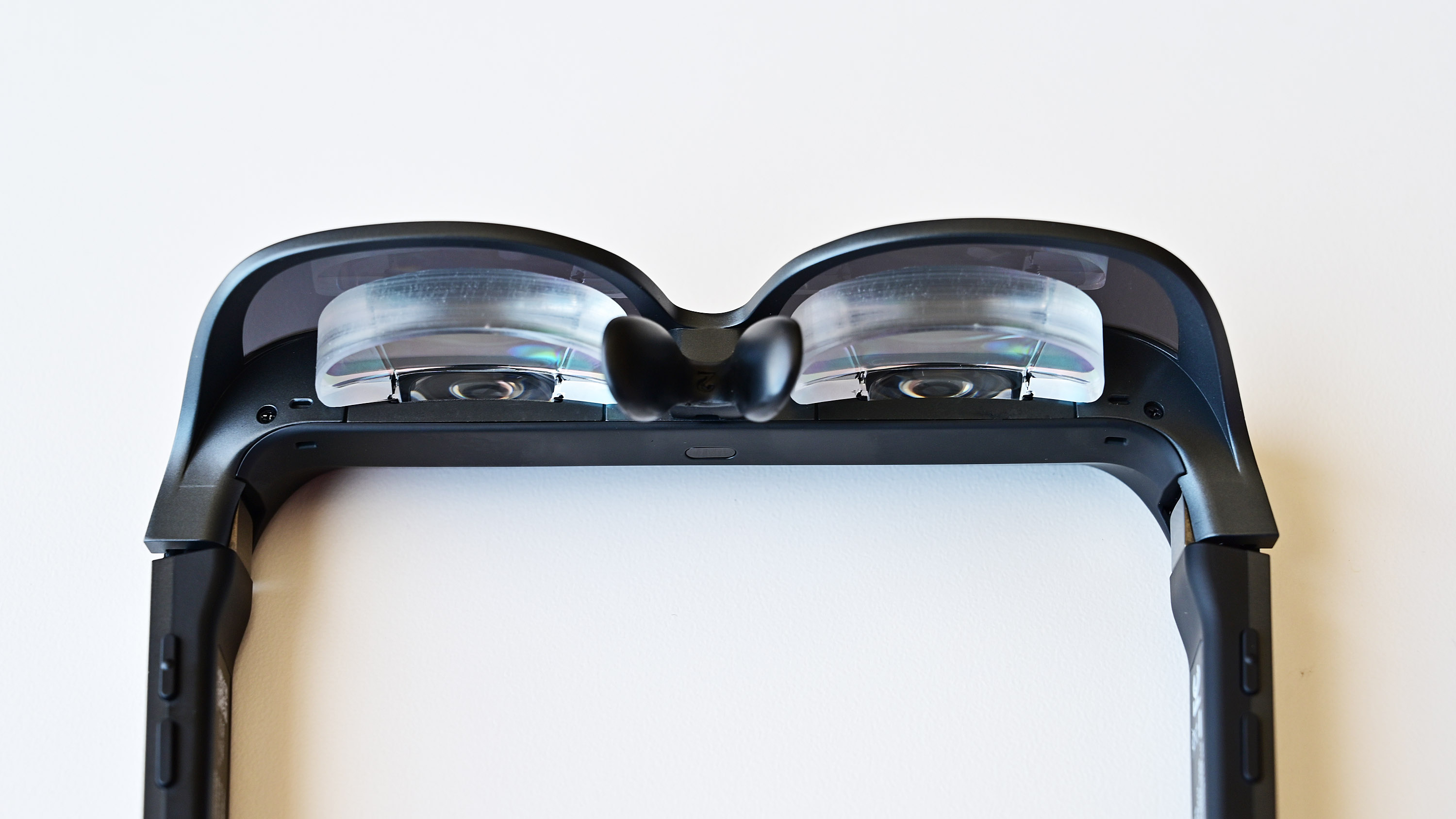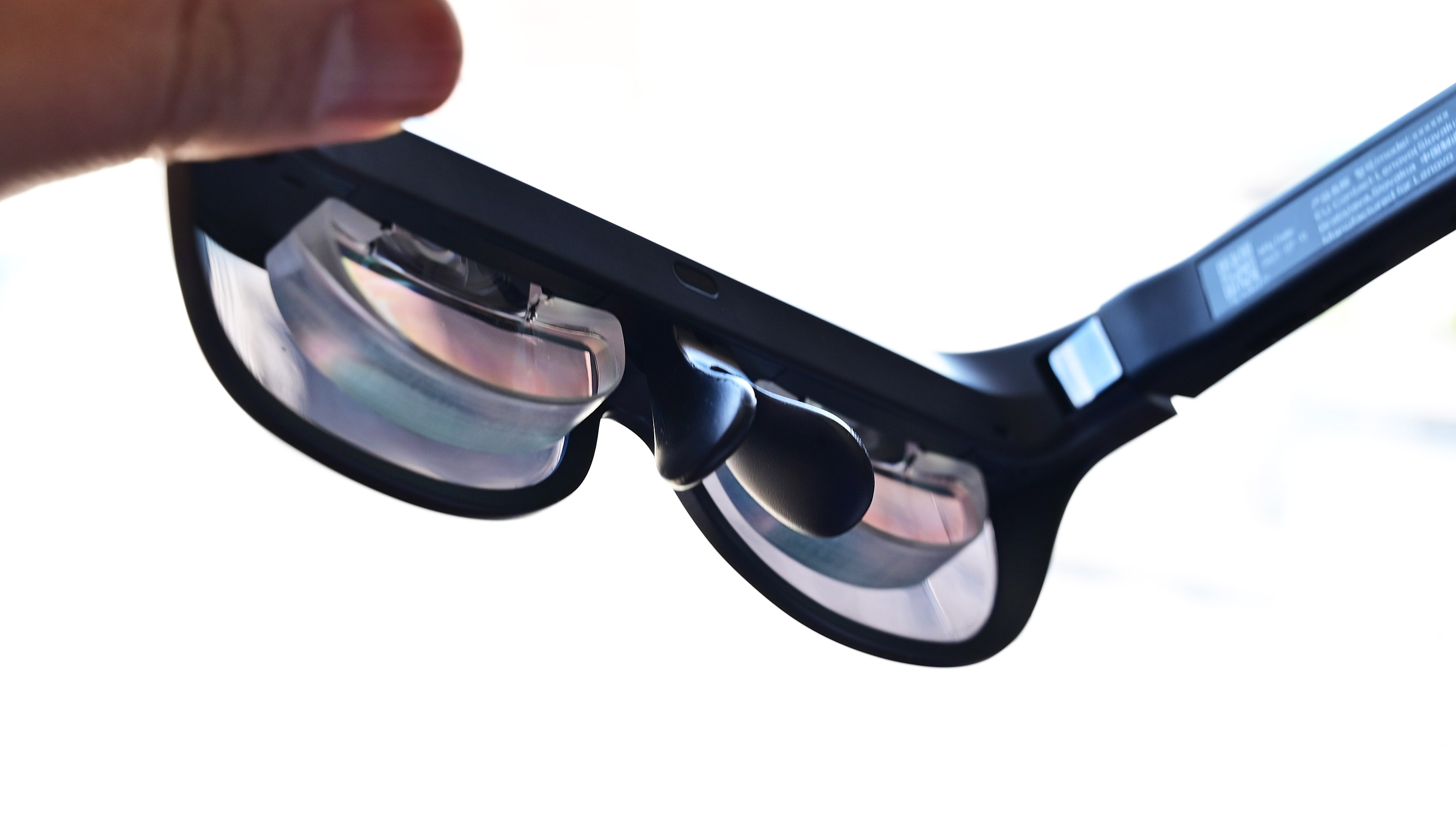Lenovo’s new Glasses T1 are the coolest PC accessory I’ve seen that just makes sense
If you ever wanted a virtual “AR” display for your Windows PC (or smartphone), Lenovo’s new Glasses T1 will excite you.

- Lenovo announced its new Glasses T1 at IFA 2022
- The glasses use micro-OLED display technology
- Plugged in, the glasses create a secondary virtual display that only you can see
- The Glasses T1 will be available in early 2023 with price TBD
Lenovo at IFA 2022 revealed its new Glasses T1, a new wearable display that I think will be a minor hit amongst tech folks.
Not to be confused with the much more expensive ThinkReality A3 Smart Glasses, which require a beefy PC GPU and sensors similar to Microsoft's HoloLens, Glasses T1 are simpler: Create one virtual display while also being more affordable.
Or, as Lenovo puts it, “a big screen in your pocket.”
Since Glasses T1 is a stripped-down version of the ThinkReality A3 glasses, no sensors and less hardware make them more comfortable to wear since it is now significantly lighter.
But the real perk with this setup is that a single Type-C cable powers it. Just plug it into any Windows PC, and the glasses automatically behave like a secondary display. You could also use them with any modern Android phone and even an iPhone (with an adapter, of course).
No worries for those who wear glasses, as Glasses T1 supports prescription lenses (via an in-box attachable frame). The nose clips are swappable to fit different bridges, and the temple arms are adjustable to maximize comfort.
Lenovo Glasses T1: Who is it for?
Lenovo says Glasses T1 is for anyone who wants to wear a secondary display. That’s all it does. There is no interaction like actual augmented reality (AR); it is just a display that hovers in front of you while maintaining your view of the world.
All the latest news, reviews, and guides for Windows and Xbox diehards.
Possible uses include anyone who wants privacy while in public. You can turn off the primary laptop display on a Windows PC and only use the glasses. Whether you’re working on sensitive documents or looking at the content you don’t want others to see; only you can see what is being looked at with these glasses.
Think of being in a coffee shop, a commuter train, or maybe a flight. You fire up your laptop to begin some work but don’t want the entire room or cabin to see what is on your screen — put these glasses on and plug them into the PC, and you’re all set.
Or maybe watch a movie and play a video game.
You could also keep the primary laptop display enabled and have a second desktop and screen, just virtual.
Lenovo Glasses T1: Why they’re great
I was pretty impressed with my limited experience with the glasses. The micro-OLED lenses deliver a “super-high contrast ratio of 10,000:1,” which results in a very sharp and clear image of the Windows desktop.
The resolution is equivalent to 1920x1080 per eye and with a 60Hz refresh, so it feels very familiar. It has TUV Low Blue Light and Flicker Reduced certifications, which is ideal for long-term wearability as it reduces eye fatigue.
The image quality looked good, and there wasn’t too much letterboxing. Controls on the sides of the glasses let you re-orientate the image to your direct line of site, and you can make finer adjustments as well.
Speakers are also built into the glasses, so you don’t have to wear a pair of headphones, which would result in a clumsier setup.
What I like most about Glasses T1 is there are no gimmicks. It has one job, and you either need that function of a virtual floating display with your phone or PC, or you don’t. It’s a narrow group of users, but the messaging and marketing are clear for selling these.
This technology would also benefit people who work with NDA material, sensitive documents, financial info, things NSFW, etc.
While Lenovo hasn’t announced pricing for these glasses, they will no doubt be more affordable than the ThinkReality A3 Smart Glasses, which costs $1,499. The $800 range (or less) would seem like a likely ballpark of where the company would like to sell these, making them much more accessible.
We’ll have to wait a bit, however, as the Glasses T1 won’t hit China until late 2022 (where they’re known as Lenovo Yoga Glasses) and other select markets in 2023. That’s also when we’ll find out more about final pricing.
All I know is that this is the first pragmatic use of this technology that I could see being widely adopted, and that’s very cool.
And if you think these glasses are neat, don't forget to check out Lenovo's new 16-inch PC with a foldable OLED display.

Daniel Rubino is the Editor-in-chief of Windows Central. He is also the head reviewer, podcast co-host, and analyst. He has been covering Microsoft since 2007 when this site was called WMExperts (and later Windows Phone Central). His interests include Windows, laptops, next-gen computing, and wearable tech. He has reviewed laptops for over 10 years and is particularly fond of 2-in-1 convertibles, Arm64 processors, new form factors, and thin-and-light PCs. Before all this tech stuff, he worked on a Ph.D. in linguistics, performed polysomnographs in NYC, and was a motion-picture operator for 17 years.






